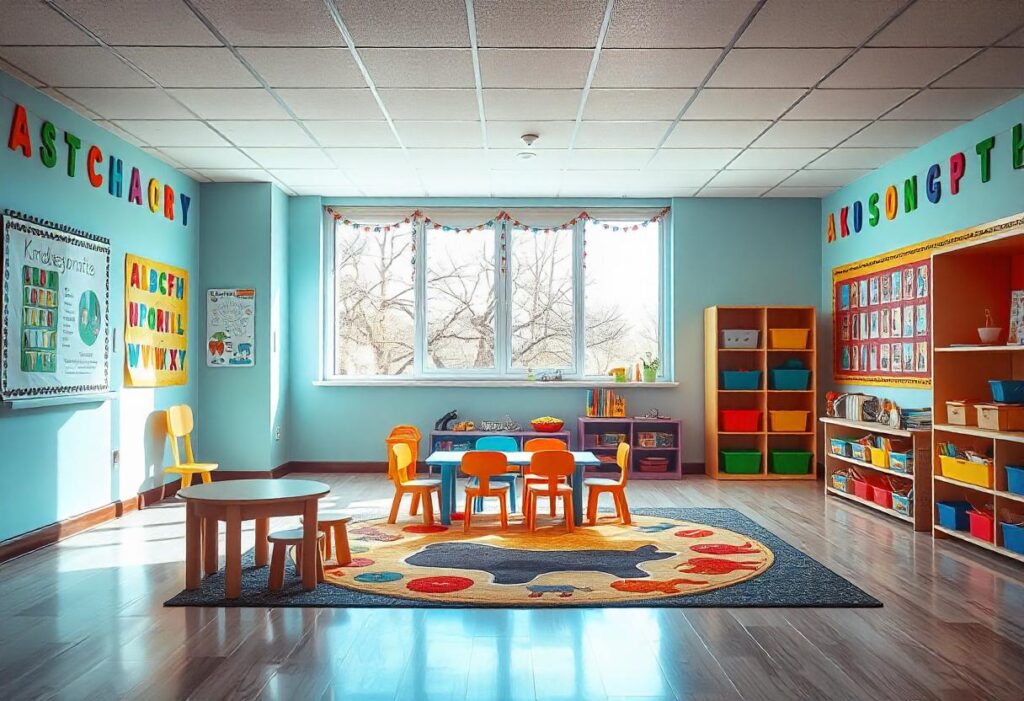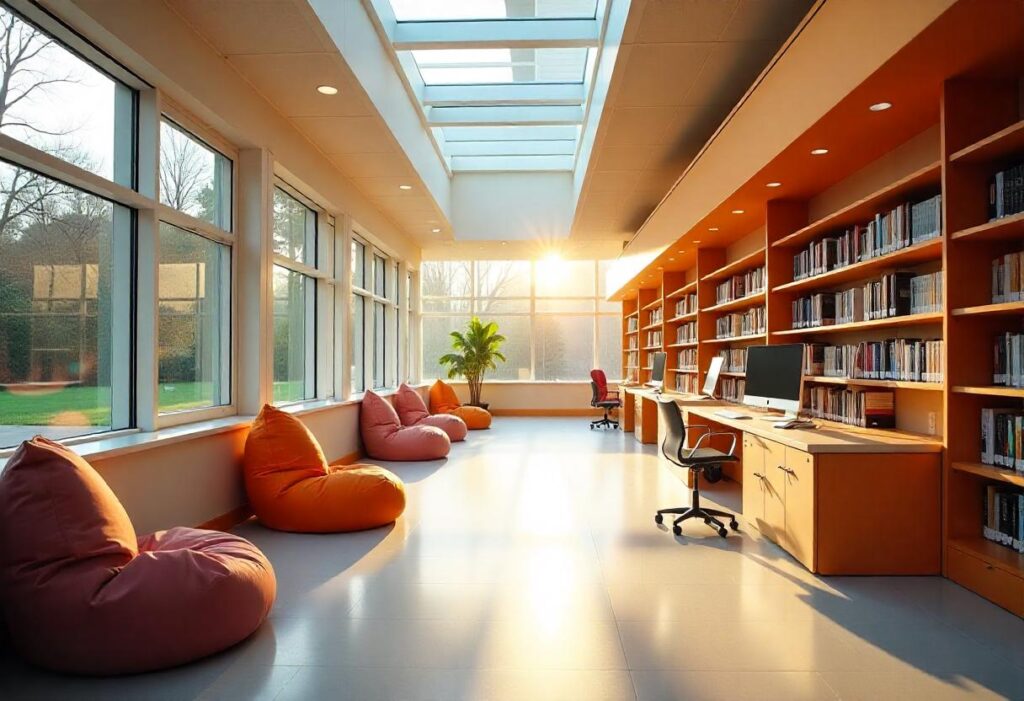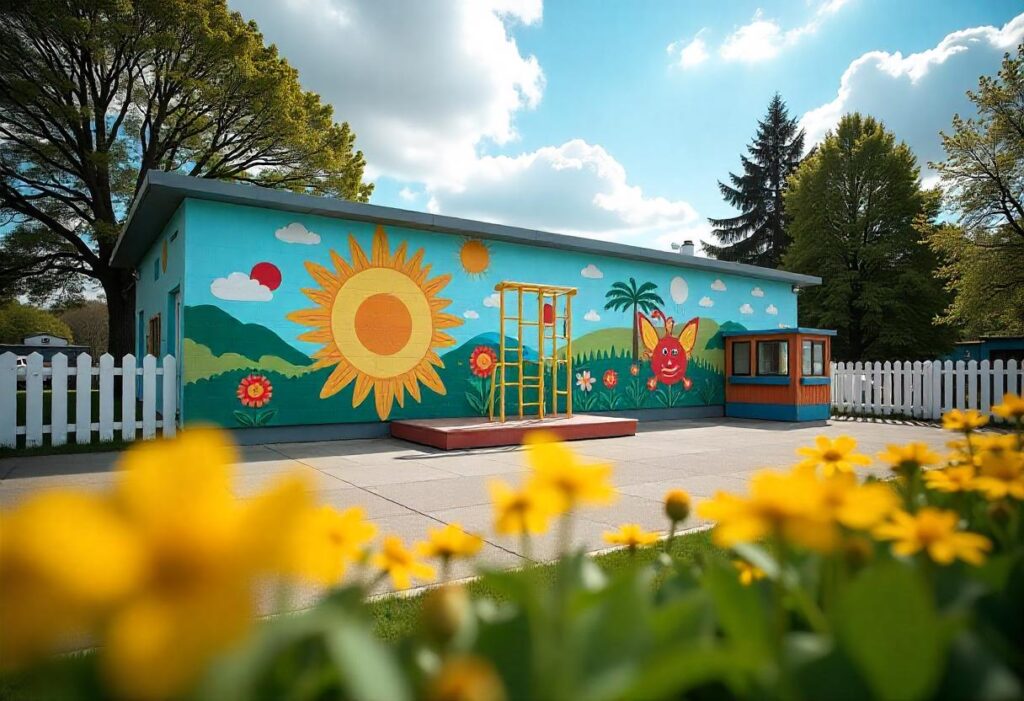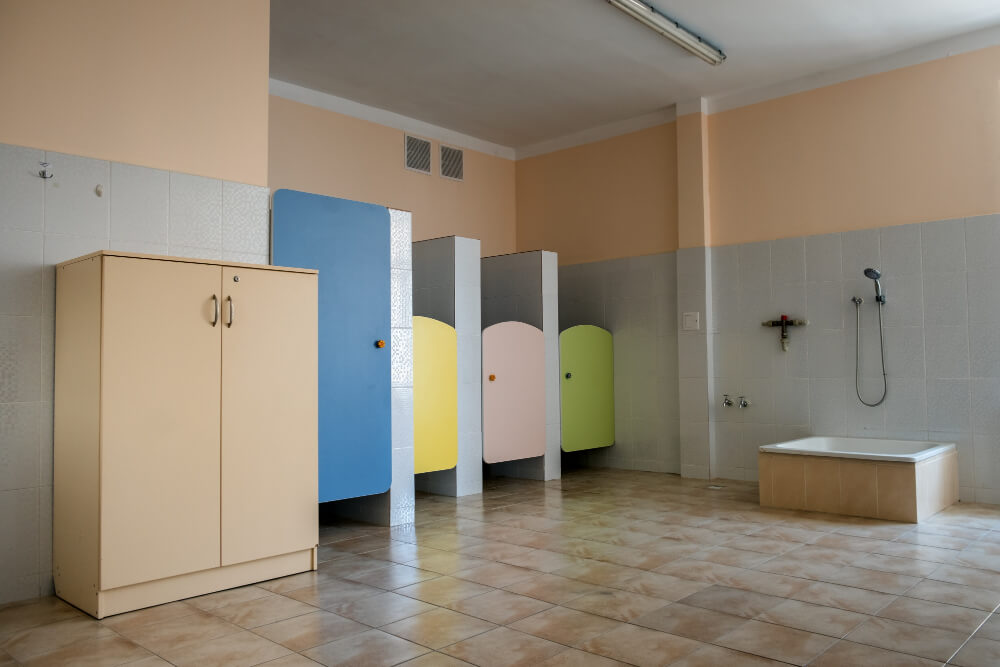Infrastructure
School infrastructure serves as the foundation of a productive learning environment, encompassing various essential elements such as classrooms, libraries, laboratories, playgrounds, sanitation facilities, transportation, and technology. Key features of the infrastructure include spacious classrooms with a traditional environment, well-equipped laboratories, and well-stocked libraries. The classrooms are well-ventilated to ensure a comfortable atmosphere, while sports grounds are available for football, basketball, badminton, and volleyball. Additionally, the school provides facilities for indoor activities like table tennis and dance, as well as dedicated audio-visual rooms to support diverse learning needs.

Classroom Environment
A well-designed classroom with proper lighting, ventilation, and ergonomic furniture creates a positive learning environment, reducing distractions and improving student focus and performance.
The spacious, well-lit classrooms feature to enhance teacher-student interaction.
To maximize instructional effectiveness, the following equipment has been installed:
- Digital Smart Boards
- Stereo Speakers
- Projector
- Ceiling-Mounted LCD
- Wi-Fi Access
- PC Ports
Libraries and Laboratories
Access to well-stocked libraries and fully equipped laboratories is essential for a comprehensive education. Libraries offer students a wide range of books and resources, fostering a love of reading and expanding their knowledge. Laboratories provide hands-on experience and practical learning opportunities, particularly in subjects such as science, technology, engineering, and mathematics.
The library’s infrastructure includes its physical spaces and supporting systems, such as shelves or remote storage for resources, circulation desks, self-check-in machines, and printers.


Playgrounds and Sports Facilities
Physical activity and sports are vital for a child’s development. Well-designed playgrounds and sports facilities promote fitness, teamwork, and life skills like discipline, perseverance, and leadership, while allowing students to explore talents beyond academics.
Key safety considerations include:
- Ensuring a level floor plan to prevent hazards.
- Proper drainage to avoid surface stagnation.
- Shock-absorbing flooring.
- Removal of rigid elements that could cause injury.
- Regular verification of certified sports equipment.
The quality and safety of outdoor playgrounds and sports areas are maintained through regular inspections and upkeep of the flooring and equipment.
Sanitation Facilities
Access to clean sanitation facilities is essential for students’ health and well-being, promoting hygiene, reducing disease risk, and ensuring a safe learning environment.
Objectives:
- Provide water and sanitation facilities in schools to encourage good hygiene habits from an early age.
- Promote toilet use, handwashing at key times, and equal participation in tasks like water collection and toilet cleaning.
- Foster behavioral change through hygiene education linked to home and community.
- Establish systems for schools to maintain facilities independently.
Technology Integration: Incorporating technology into education enhances learning outcomes, providing students with digital tools and literacy skills needed for the future.

